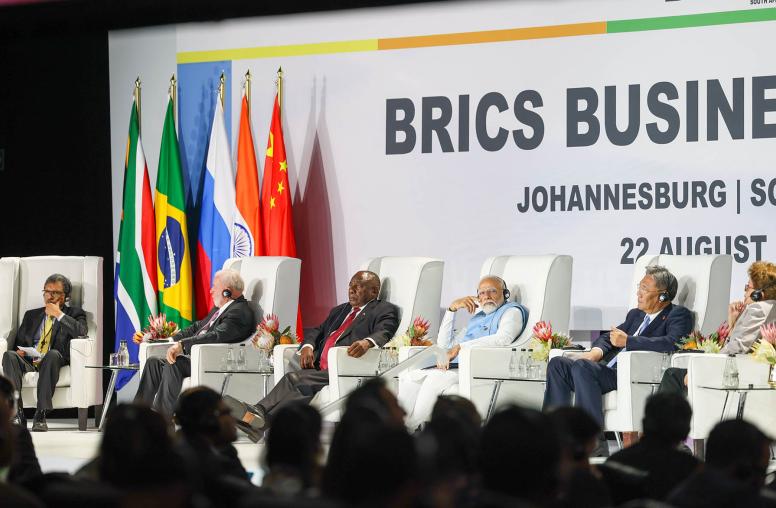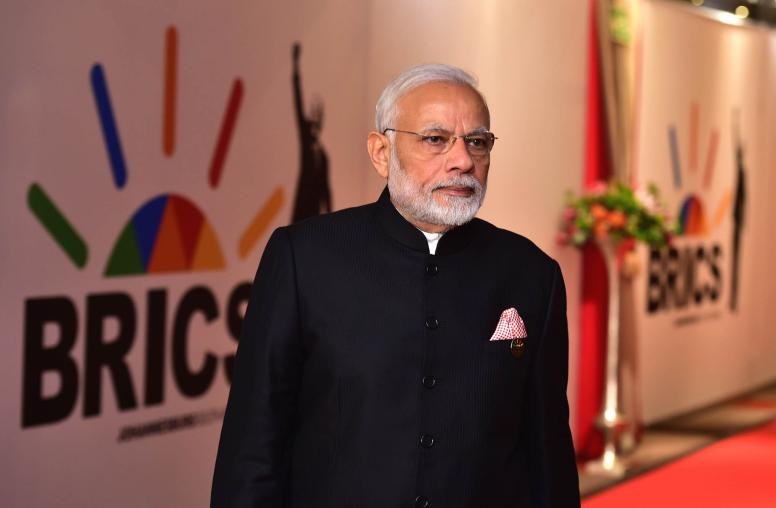Truth Commission: South Africa
Truth Commission: Commission of Truth and Reconciliation
Duration: 1995 – 2002
Charter: Promotion of National Unity and Reconciliation Act, No. 34 of 1995
Commissioners: 17
Report: Public report
Truth Commission: Commission of Truth and Reconciliation (TRC)
Dates of Operation: December 1995 – 2002 (7 years; the original mandate ended in 1998 but was extended.)
Background: Apartheid was a system of legally enforced racial segregation in South Africa between 1948 and 1990. The National Party that controlled the government formalized and expanded segregationist policies that had existed less formally under colonial rule. Institutionalized racism stripped South African blacks of their civil and political rights and instituted segregated education, health care, and all other public services, only providing inferior standards for blacks and other non-Afrikaans. Internal resistance was met with police brutality, administrative detention, torture, and limitations on freedom of expression. Opposition groups, such as the African National Congress (ANC) and other movements, were banned and were violently repressed.
After a series of international sanctions – and the end of the Cold War – a mostly peaceful transition from the Apartheid system started with a series of negotiations between the government party and the ANC between 1990 and 1993. Democratic elections were held in 1994, and an interim constitution was passed. The Truth and Reconciliation Commission was set up by the newly elected parliament and was endorsed by opposition leader Nelson Mandela and other prominent South African figures.
Charter: Promotion of National Unity and Reconciliation Act, No. 34 of 1995, July 26, 1995.
Mandate: The Truth and Reconciliation Commission was created to investigate gross human rights violations that were perpetrated during the period of the Apartheid regime from 1960 to 1994, including abductions, killings, torture. Its mandate covered both violation by both the state and the liberation movements and allowed the commission to hold special hearings focused on specific sectors, institutions, and individuals. Controversially the TRC was empowered to grant amnesty to perpetrators who confessed their crimes truthfully and completely to the commission.
Commissioners and Structure: The TRC was comprised of seventeen commissioners: nine men and eight women. Anglican Archbishop Desmond Tutu chaired the commission. The commissioners were supported by approximately 300 staff members, divided into three committees (Human Rights Violations Committee, Amnesty Committee, and Reparations and Rehabilitation Committee).
Report: The commission's report was presented to President Mandela in October 1998. The report was widely disseminated and is available online (select ‘the trc report’ from the left-hand menu).
Findings:
Conclusions
- The TRC took the testimony of approximately 21,000 victims; and 2,000 of them appeared at public hearings. The commission received 7,112 amnesty applications. Amnesty was granted in 849 cases and refused in 5,392 cases, while other applications were withdrawn. The work of the Amnesty Committee is available for review on the TRC's home page.
- Records were systematically destroyed in massive qualities between 1990 and 1994. The commission reported that the National Intelligence Agency was still destroying records as late as 1996 and that “swathes of official documentary memory, particularly around the inner workings of the apartheid state’s security apparatus, have been obliterated”.
- The TRC’s report covered the structural and historical background of the violence, individual cases, regional trends, and the broader institutional and social environment of the apartheid system.
- The final report named individual perpetrators.
Recommendations
- The TRC made detailed recommendations for a reparations program including financial, symbolic and community reparations. The commission proposed that each victim or family should receive approximately $3,500 USD each year for six years.
- The commission further recommended that South Africa’s society and political system should be reformed to include faith communities, businesses, the judiciary, prisons, the armed forces, health sector, media and educational institutions in a reconciliation process.
- Prosecution should be considered in cases where amnesty was not sought or was denied, if evidence existed.
- The commission’s work should be preserved by archiving its documents.
Subsequent Developments:
Reforms
- The report of the TRC was fully endorsed by the government. President Mandela apologized to all victims on behalf of the state. Deputy President Thabo Mbeki, in his capacity as President of the ANC, said that the ANC had “serious reservations” about the TRC’s report.
- In 2006, after pressure from civil society, the government established a body to monitor the implementation of the TRC's recommendations -- reparations and exhumations in particular.
- A missing persons taskforce was established to exhume and rebury victims and to continue investigations of disappearances.
Prosecutions
- The TRC subcommittee denied amnesty in numerous cases. However, few trials were actually held.
- Several high-level members of the former police were convicted for the attempted murder of Reverend Frank Chikane in 1989.
- The trial of former minister of defense Magnus Malan and nineteen others ended in acquittal.
- In 2005, the prosecution policy was amended. The National Director of Public Prosecutions was granted wide discretion not to prosecute. In 2008, the Pretoria High Court ruled that the policy was unconstitutional, unlawful and invalid as it would amount to immunity against prosecution for individuals who had not cooperated with or had been denied amnesty by the TRC.
- In October 2007, a United States Court of Appeals ruled that it had jurisdiction to hear a case concerning multinational corporations accused of “aiding and abetting” apartheid.
- In 2007, former President Mbeki instituted a process to grant special pardons in addition to the amnesties granted by the TRC Amnesty Committee. This process has been continued by Mbeki’s successors, Presidents Motlanthe and Zuma. A network of South African civil society organizations is challenging the special pardons process in domestic courts.
Reparations
- There were long delays in the payment of reparations. The amount of reparations paid to 21,000 victims was far lower than the amount recommended. The government refused to release the amount of remaining money reserved for reparations.
Special Notes: The TRC had an annual budget of $18 million USD. Its work was widely broadcast on the national television; hour-long episodes on its work as well as live hearings were broadcast every week. Only victims who testified to the TRC were eligible to take part in the reparations program, which led to a significant increase in testimonies. The National Intelligence Agency continued to destroy documents in defiance of two government moratoria on the destruction of records.
Sources:
- Amnesty International. 2009. Annual Report: South Africa. Available at http://www.refworld.org/docid/4a1fadc05f.html (accessed January 14, 2010).
- Amnesty International and Human Rights Watch. Truth and Justice: Unfinished Business in South Africa. London, UK.: International Secretariat, 2003. Available at https://www.amnesty.org/en/documents/afr53/001/2003/en/ (accessed July 3, 2008).
- Benton, Shaun. "New Policy on Apartheid Crimes." BuaNews, 18 January 2006. (accessed August 11, 2008).
- Boraine, Alex. A Country Unmasked: Inside South Africa's Truth and Reconciliation Commission. Oxford; New York: Oxford University Press, 2000.
- Center for the Study of Violence and Reconciliation. "Justice in Perspective - Truth and Justice Commission, Africa - South Africa." Available at http://www.justiceinperspective.org.za/index.php?option=com_content&task=view&id=35&Itemid=19 (accessed June 23, 2008).
- Confronting the Truth: Truth Commissions and Societies in Transition. Directed by Steve York, York Zimmerman Inc., United States Institute of Peace and International Center on Nonviolent Conflict. [United States]: York Zimmerman Inc., 2006.]
- Daley, Suzanne. "In Apartheid Inquiry, Agony is Relived but Not Put to Rest." New York Times, July 17, 1997. Available at http://www.nytimes.com/1997/07/17/world/in-apartheid-inquiry-agony-is-relived-but-not-put-to-rest.html (accessed June 11, 2009).
- Harris, Verne. Telling Truths about the TRC Archive South African History Archive, 2002. http://www.saha.org.za/research/publications/FOIP_5_2_Harris.pdf (accessed July 3, 2008, no longer available online).
- Hayner, Priscilla B. "Fifteen Truth Commissions-1974 to 1994: A Comparative Study." Human Rights Quarterly. 16, no. 4 (1994), 597-655.
- Hayner, Priscilla B. Unspeakable Truths: Facing the Challenge of Truth Commissions. New York: Routledge, 2002.
- "In-Depth: Justice for a Lawless World? Rights and Reconciliation in a New Era of International Law: SOUTH AFRICA: 10 Years After the Truth Commission: Survivors are Frustrated." IRIN News, 2006. (accessed August 11, 2008).
- International Center for Transitional Justice. "South Africa." Available at http://ictj.org/our-work/regions-and-countries/south-africa (accessed May 12, 2011).
- Simpson, Graeme. "'Truth, Dare Or Promise': Civil Society and the Proposed Commission on Truth and Reconciliation." World Trade Centre, Johannesburg, 1994. (accessed July 3, 2008).
- "South Africa: More Truth Commission Files Disappear." Mail & Guardian, October 25, 2002, 2002, sec. Africa News.



